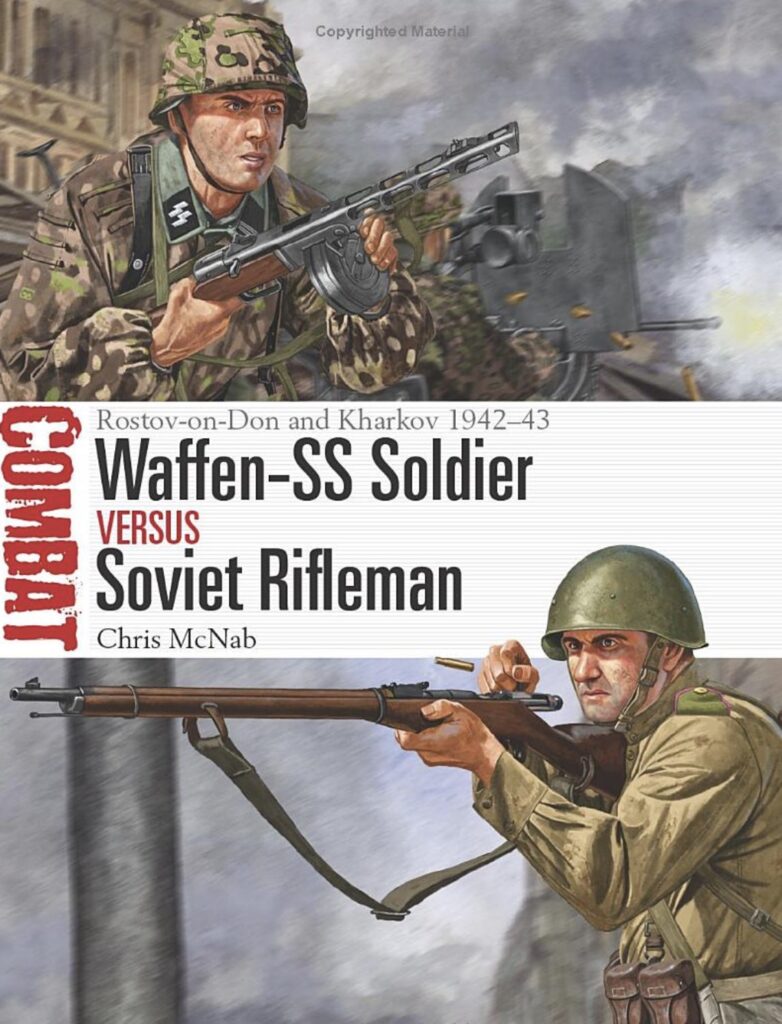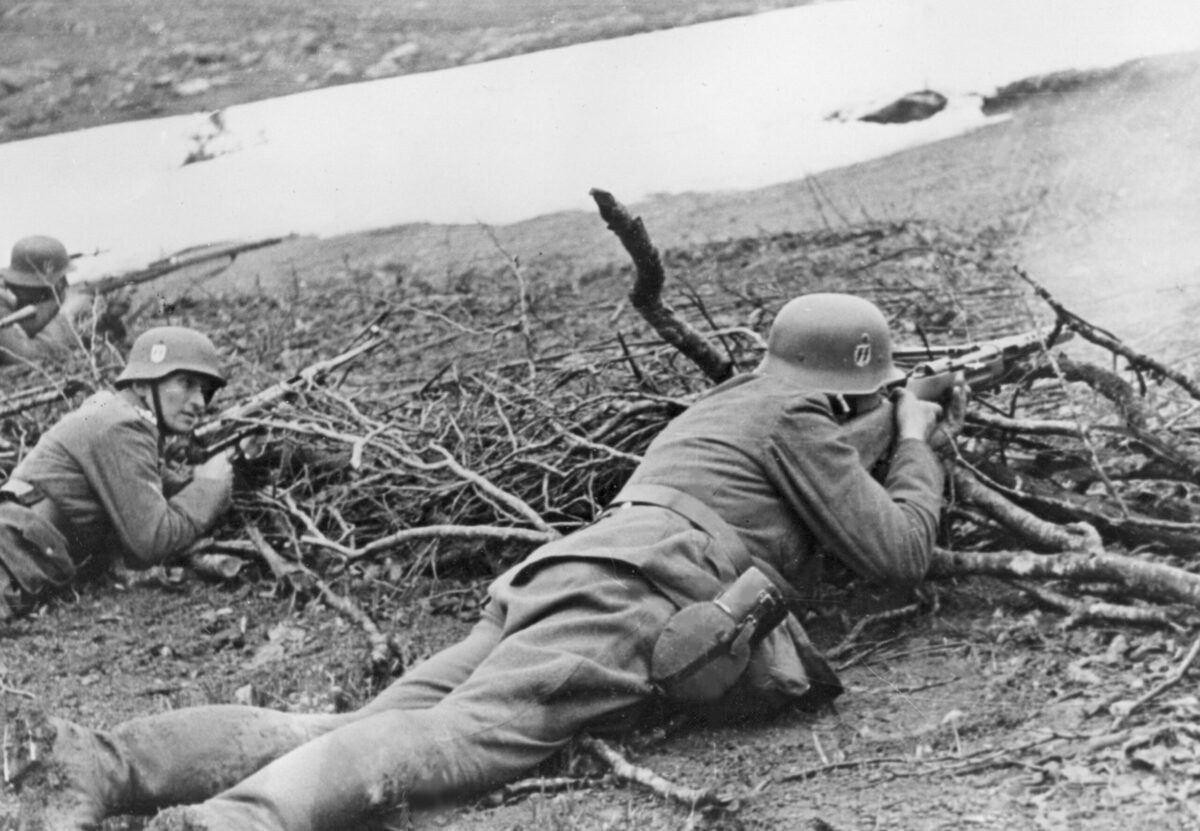In February 1943 the Waffen-SS came to Yefremovka, Ukraine, a tiny, ethnic Cossack village west of Kharkov in the USSR’s Ukrainian SSR. Specifically, the 1st SS Panzer Division Leibstandarte SS Adolf Hitler (LSSAH) descended upon the unprotected and totally defenseless village—then a Soviet collective farm. When the LSSAH left hours later, nearly 1,000 old men, women and children from that village and hundreds of others rounded up from surrounding hamlets had been brutally murdered, including more than 100 civilians who had been herded into Yefremovka’s small local Orthodox church.
Trapped inside the church, they were horrifically and mercilessly burned to death. Two of the few survivors of this massacre—a mother (my wife’s grandmother) and her 8-year-old daughter (my future mother-in-law)—survived only because a Wehrmacht (German Army, not SS) transport driver warned them to hide in an underground root cellar while—risking his own life had his humanitarian act been discovered—he deliberately parked his truck over the cellar entrance to conceal them during the massacre. This disgusting mass slaughter was exactly the manner in which Hitler’s vaunted Waffen-SS consistently fought World War II.
Killers, Not Soldiers
From the very beginning of the war, these cold-blooded killers, masquerading as soldiers in uniform, murdered their way through combat on the war’s Eastern and Western fronts, starting with the May 28, 1940 Wormhoudt Massacre in France during which the LSSAH forced 87 British and French POWs—captured while serving as rearguard to the heroic Dunkirk evacuation—into a barn, then tossed hand grenades inside slaughtering 81 and wounding 6 of the helpless POWs. Countless other examples of Waffen-SS war crimes abound throughout the whole war.
Indeed, shortly after the Normandy invasion, from June 7–17, 1944, the 12th SS Panzer Division (Hitlerjugend) murdered 158 Canadian POWs. The Waffen-SS’s most notorious war crime atrocity was the infamous Dec. 17, 1944 “Malmedy Massacre” at Baugnez Crossroads, Belgium where LSSAH’s Kampfgruppe Peiper brutally executed 84 unarmed POWs, primarily G.I.s of the 7th US Armored Division’s 285th Field Artillery Observation Battalion.
A few US soldiers survived and escaped the slaughter. When I interviewed one of the massacre’s several survivors four decades later, he somewhat ashamedly, but understandably admitted, “Even today, I don’t like Germans very much.”
The same day as the Malmedy Massacre, Hitler’s Waffen-SS proved to be “equal opportunity murderers” with another massacre of U.S. POWs not far away. The LSSAH perpetrated the “Wereth Massacre,” the beating, torture and execution of 11 Black soldiers in two batteries of the 333rd Field Artillery Battalion near Wereth, Belgium.
These horrific atrocities are only some examples of the Waffen-SS’s numerous war crimes, which happened throughout the duration of the war from start to finish—especially on the Eastern Front where their fanatical embrace of Hitler’s racial lunacy classified “Slavs” and Jews as “subhumans” who the Waffen-SS routinely murdered.
Misguided “Fan Base”
Yet perhaps the most disheartening aspect of the Waffen-SS’s story is that, starting a few decades after World War II, an admiring, fawning “Waffen-SS fan base” has emerged, mainly amongst younger military history buffs in the U.S. and the UK who celebrate the widely-acknowledged tactical/operational expertise and genuine military prowess of the Waffen-SS, but who stubbornly ignore the disgusting record of war crimes of these “killers in uniform”.
Having no “skin in the game” as the World War II generation did, these Waffen-SS “fans” admire them chiefly because the Waffen-SS had “cool” camouflage uniforms and innovative tanks and small-arms weapons. Sad and sorry reasons to celebrate and admire war criminals.
Waffen-SS vs. Soviet INfantry
UK-based author Chris McNab’s mission in writing another meticulously-researched, expertly-written, and highly informative book in Osprey Publishing’s excellent “Combat” series is not to detail the endless examples of the homicidal Waffen-SS’s countless war crimes—his job in this dual examination and insightful analysis of two opposing combat formations is to compare and contrast, within the context of the Rostov-on-Don and Kharkov battles of 1942–43, the composition, arms, equipment/weapons/tactics, training and combat records of both opponents, and to present and analyze the strengths and weaknesses of each combatant formation.
As usual, McNab—a regular author for MHQ—does an outstanding job in accomplishing that mission in only
80 pages.

BOOK TITLE GOES HERE
Book subtitle or blurb goes here.
by Chris McNab, Osprey Publishing, 2023
If you buy something through our site, we might earn a commission.
Of course, McNab brings out the contrasting ideological motivations and inspirations of the elite Waffen-SS units and the standard Soviet rifleman—the USSR’s version of what in the U.S. could be called the typical “G.I.”—particularly pointing out that while each member of the Waffen-SS swore an oath to Adolf Hitler personally, his Red Army counterpart pledged to “my last breath to be faithful to the people, to the Soviet Motherland, and the Workers-Peasants’ Government [aka The Soviet Union].”
Waffen-SS fighters fought for Hitler, waging a racially fueled war of aggression and conquest, while Red Army soldiers fought to defend their homeland against a ruthless enemy invader murdering his way across their nation.
How the Tables Turned
McNab’s expert analysis clearly reveals that in the beginning of the Eastern Front clash between the two combatants the more tactically skilled and better-trained, ideologically-motivated Waffen-SS volunteers held the early advantage over their mostly conscripted Soviet riflemen opponents defending their country, families and homes.
However as the war dragged on, Red Army soldiers and, importantly, their commanders and leaders at all levels—most of them fortunate survivors of Stalin’s disastrous Red Army purge of 1936–1941 but inadequately prepared for warfare in June 1941—learned valuable lessons in fighting, commandership and the tactical-operational art.
Arguably, the eventual Red Army victory in May 1945 over Hitler’s legions as the Soviets snuffed out the last vestiges of Nazi resistance in the rubble of Hitler’s capital, Berlin, might be attributed to a triumph of Soviet “mass” (overwhelming numbers of troops and weapons) over a more skilled but greatly outnumbered German opponent—as Stalin famously said, “Quantity [mass] has a quality all its own.”
Yet Red Army commanders had learned via blood and sacrifice from 1941–1945 how to fight and above all how to win against Hitler’s best. The Waffen-SS, clearly, were ruthless killers, but they inarguably were excellent teachers.






